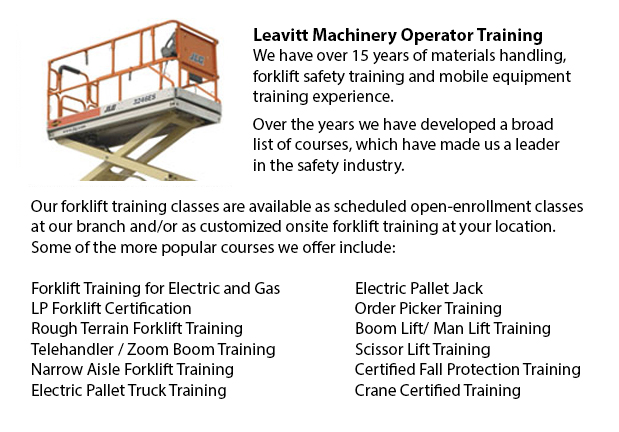
Ottawa Scissor Lift License - The is an inherent chance in operating a scissor lift, since with all kinds and types of powered work tools would require correct handling to be able to avoid accidents that may cause damage or injuries. Companies have to ensure that staff utilizing this particular machinery have the needed training.
Untrained employees should not be allowed by their companies to make use of scissor lifts. The lift is designed to raise people and materials to various heights. Failure to know and completely abide by safety standard could cause damage to the lift or injuries for users.
There are no regulations governing the use of fall protection for those who use scissor lifts. Then again, manufacturers may recommend the utilization of fall protection and in various circumstances tying off in scissor lifts might be required by employer guidelines, job-specific risk assessments or local rules.
To be able to ensure that the scissor lift is in good working order before utilizing the machine, the operator must perform a thorough check. This is the operator's task, even though the unit has already been in service that very same day. The equipment's operator's handbook contains a pre-operation checklist.
Examples of what to look for when doing a pre-operation check include checking tire-inflation pressure, and checking ground controls and controls in the platform in order to ensure they are working. When retracting or extending the boom, look for delayed movement on the fly section which may indicate cables are loose. Whilst operating the controls, make certain that the emergency stop switches are working. Operate functions against the machine's cutout switches. Check the boom control system by cycling a boom lift to the furthest extent of its operating envelope. Safety limiters must automatically stop the unit before it moves into an unstable position, if they are working properly. If they aren't, turn off the lift and make certain that it is fixed before using it for a second time.
Safe and proper operating procedures should be followed at all times. Levers must be operated with controlled, even pressure. A control lever should never be pushed from one position to the opposite position. The lever should be shifted to neutral, prior to stopping, and then proceeding in the desired direction. When released, control switches and levers must return to the neutral position automatically. Depress the foot switch before operating platform controls.
-
Ottawa Boom Lift Ticket
Ottawa Boom Lift Ticket - Boom Lifts are a table lift piece of equipment which could be lifted or lowered to varying heights, making this apparatus a useful tool for many manufacturing purposes. There are some unique types of Boom Lift consisting of... More -
Ottawa Boom Lift Operator Training
Ottawa Boom Lift Operator Training - The cherry picker work platform is a kind of work platform, which will typically have a bucket or platform at the hydraulic lifting system's end. The device is also referred to as a man lift, boom lift, basket cra... More -
Aerial Lift / Boom Lift / Man Lift / Scissor Lift Training in Ottawa
Scissor lifts are forklift tables which raise objects and people and supplies vertically. They are normally utilized in industrial, construction and commercial environments. A common use of scissor lifts is for lifting or lowering construction suppli... More -
Ottawa Crane Certification
Ottawa Crane Certification - The Crane Certification training program covers content suggested by industry concerning the safe and efficient operation of cranes. Individuals training would know the following: pre-operational, operational and post ope... More -
Ottawa Heavy Equipment Training Courses
Ottawa Heavy Equipment Training Courses - The first step required to take when selecting heavy equipment operator courses is determining the capacity you wish to work with heavy machinery. Like for example, you can take courses that will teach you ho... More -
Ottawa Fall Protection Ticket
Ottawa Fall Protection Ticket - Fall-related accidents are the number one reason of death in the construction trade. The potential for fall accidents very much increases based on the kind of work which is being completed within your workplace. So, be... More -
Ottawa Telehandler Operator Training
Ottawa Telehandler Operator Training - Telescopic handler Forklifts or telehandler forklifts are common industrial machinery seen in various construction business settings. The telehandler is a useful machine and makes for a valuable tool that can be... More -
Fall Protection Training in Ottawa
Regrettably, there is a large number of workplace injuries linked to falling and lots of fall-related deaths reported each year. Lots of these instances might have been prevented by having proper measures in place, offering proper training and equipp... More

Forklift Certification Ottawa
TOLL FREE: 1-888-254-6157
Ottawa, Ontario
forkliftcertificationottawa.com
Email Us
About Us


